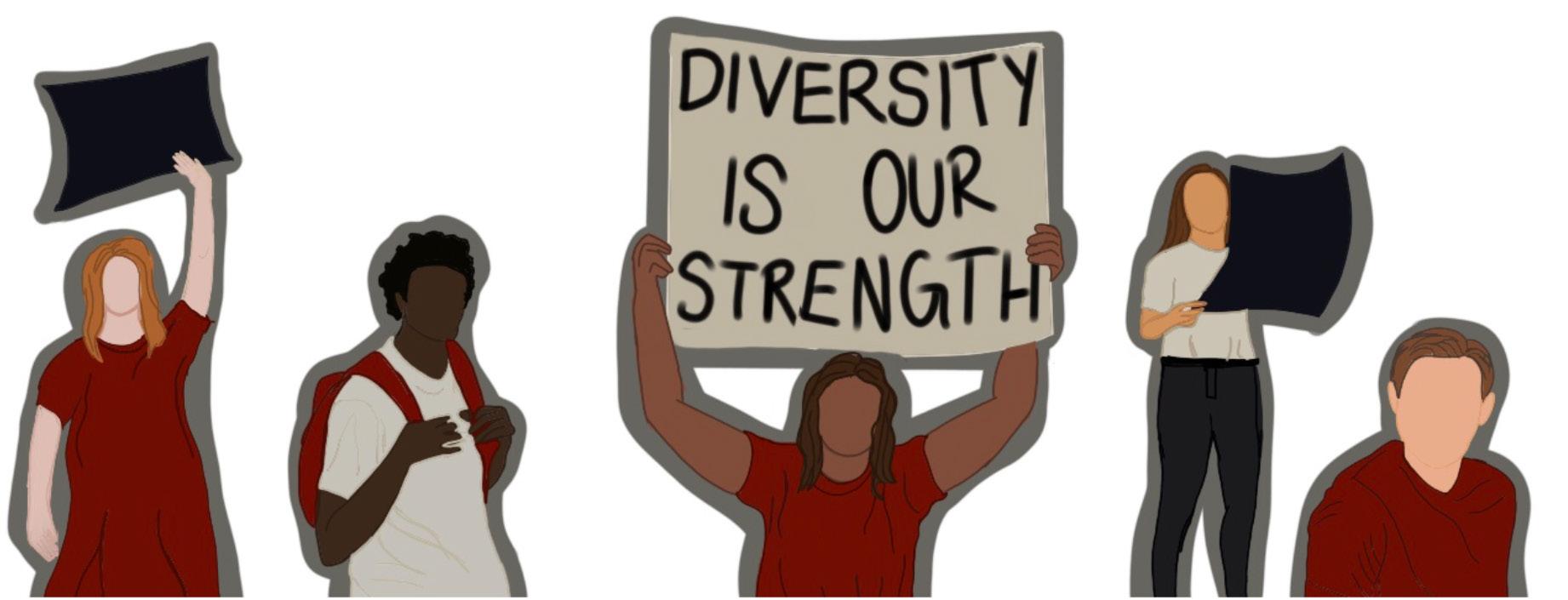
2 minute read
STAFF EDITORIAL
STAFF EDITORIAL: AGREE:9 DISAGREE:0 SHOULD DIVERSITY TRAINING BE REQUIRED IN SCHOOLS?
What is diversity training and why is it needed?
Diversity training is a way to teach people how to embrace and work with individuals from all different races, ethnicities, genders, ages, socio-economic backgrounds and sexualities. It is more than just learning how to “tolerate” differences in order to be “politically correct.”
More than half of children in the United States are people of color, and according to the Center for American Progress, by 2050 the United States will have no clear racial majority. Our education systems need to reflect this diversity.
What issues are addressed in diversity training?
Working with unconscious bias and focusing on inclusion are essential to diversity training. Everyone has unconscious bias; it is defined as social stereotypes that form outside of our awareness, according to the UCSF Office of Diversity and Outreach. Recognizing your unconscious bias and learning to manage it is a step towards being more inclusive.
In an increasingly diverse society, it is necessary that teachers ensure that student differences are used as a way to unify them instead of dividing.
In addition to helping students of different backgrounds feel safe and capable of success, diversity education teaches students acceptance and prepares them for a multicultural world.
“Simply having diverse students doesn’t do anything to shape their learning and environment and instruction,” Kenneth Morris Jr., manager of student equity for Cedar Rapids Community School District said in an interview for Insight Into Diversity. “What’s important is the community learning to interact with a multicultural mindset.”
How can teachers foster diversity in their classrooms?
Cultural sensitivity, respect and acknowledgment for every student and diverse lesson plans are ways in which
teachers can maintain positive classroom environments.
Cultural sensitivity means being aware of challenges in students’ lives and working around them, and this comes by taking time to understand each student’s individual needs.
With a quick Google search, teachers are presented with diverse and inclusive resources and strategies for students. There is no reason why these lessons should not be required in schools.
What are the benefits of diversity education in the classroom?
Students become more empathetic, open-minded and confident, and better equipped to understand people with cultures and backgrounds different from their own.
Research suggests that students in diverse schools work harder and smarter. A professor at Columbia Business School performed an experiment giving different groups of students a mystery to solve. The groups of students that were racially diverse were “significantly more likely to find the right answer.”
Rather than assuming everyone in the group thinks the same way, students were more likely to consider varying viewpoints and think about problems in a broader sense.
But the most important factor for a diverse classroom environment is open dialogue and communication. Teachers must first examine their own unconscious bias in order to do the same for their students. They then have to foster positive relationships with each student, or else students do not trust them enough to engage in open discourse.
Students must be taught to embrace those different from themselves as opposed to simply “tolerance.” It is with diversity education that we are able to create a more inclusive world for ourselves and our peers.










